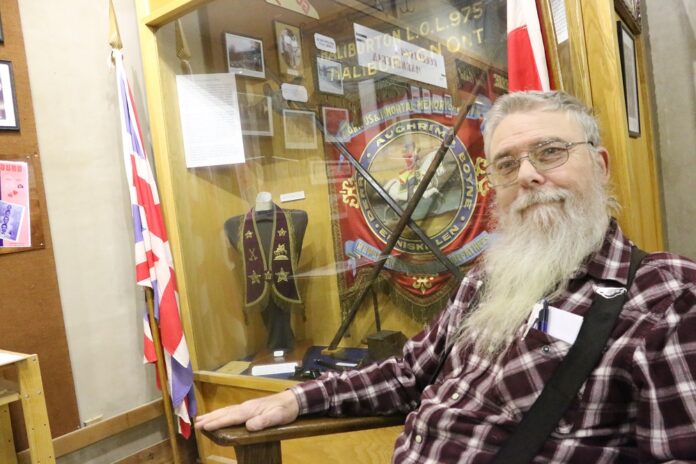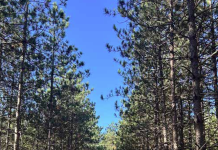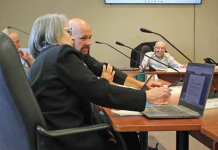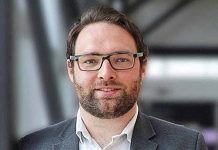The County’s chief history buff Steve Hill has retired from his role as curator at Haliburton Highlands Museum after 39 years on the job.
The 65-year-old walked through the museum’s doors for the final time as an employee Jan. 27, calling time on his career after four decades of preserving and promoting Highlands history.
Hill has played a pivotal role in shaping the museum into what it is today. He arrived in Haliburton in November 1984, becoming assistant curator. Ross Carver headed up the museum at that time, which was in its infancy after opening in 1967. Hill worked alongside Carver and Doug McNichol, though he admits the museum was a much different place back then.
“When I started here the mindset was that this place was for the tourists from the city. Something to keep them happy while they’re here, to give them something to do,” Hill said. “It was more an amusement for people to pass the time than seen as anything truly significant.”
With a growing collection of local artifacts, Hill pushed to do research on some of the more interesting items. Slowly, the trio built the museum’s inventory and started putting together rotating displays for the public.
“We made things more academic, brought a bit more seriousness to the place,” Hill said.
McNichol and Carver left in the late 80s, with Tom Ballantine brought in to steady the ship. Hill was promoted to curator in 1987.
He was around when community members like Glen Hodgson, a former MPP for the area, Ian Douglas and Henry Pristol donated pieces of different buildings, which would become the 1870s-themed log cabin farmstead that still sits on the museum’s grounds today. People started to trust Hill and Ballantine, with the museum’s collection growing quickly through the 90s.
Asked for his favourite item or display at the museum, Hill said he has two – an old 1800s Degeher and Weiler printing press that was used to publish the old Minden Echo, now the Haliburton County Echo, and an exhibit honouring the now defunct Haliburton Orange Lodge.
“I consider that press almost like the Rosetta Stone of Haliburton because it was the sole survivor of a fire at the Minden Echo building in 1942. That press kept the paper going through some difficult years at the end of the Second World War,” Hill said.
Referencing the Orange Lodge, he added, “they disbanded between 1999 and 2001… they donated all their memorabilia to the museum. Lodge members did a lot for the town. They were the first organization to host bingo in Haliburton. They played a big role in building [A.J. LaRue] arena in 1965.”
Hill has made a lot of findings over the years, even solving some local mysteries. While it was accepted for years that the mills located in the downtown, roughly between Rexall and Mega Munch on Highland Street, were likely destroyed by fire in the late 1800s, Hill found proof while reading old editions of the Lindsay Post online in 2020.
He also found reference to a fire that destroyed an old steamboat that used to bring people to Haliburton before the railway arrived in 1878.
In 2008 he and Ballantine compiled some of the museum’s most interesting photos – including 24 stills donated by the family of Daniel Gorrie, an early settler and merchant – and published Haliburton: A History in Pictures to mark the facility’s 40th anniversary.
Ballantine retired in 2012 and was replaced by Kate Butler. Having worked with Hill for the past 11 years, Butler said he’s been a great asset to the museum.
“Throughout Steve’s time at the museum, his deep interest in preserving the items and stories that tell the history of the community has, I think, been obvious to anyone who has met him,” Butler said. “There can be no doubt Steve’s many years of dedication to local history will leave a lasting legacy.”
Hill said his retirement is bittersweet. Recently turning 65, and dealing with some health problems, he feels it’s time to step away. He plans to stay in Haliburton.
“I’ll miss the people the most, their stories, the cool things they’d bring in to show me,” Hill said. “I hope the museum continues to thrive. Times have changed, people have changed. When I started here you saw a lot more kids coming through… people were proud of their history. There was a great interest in museums. But as time has moved on, people have moved away from that. Museums are struggling right now.”





